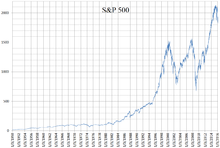Have you heard of the doomsday fish? This term has been making waves in the scientific community and beyond, and for good reason! These mysterious creatures are not just your average fish; they are harbingers of environmental change and potential doom for our oceans. In this article, we will dive deep into the world of doomsday fish, exploring what they are, why they matter, and what their presence could mean for the future of our planet. Buckle up, because this is a journey you won’t want to miss!
What Are Doomsday Fish?
The term doomsday fish refers to a variety of fish species that are often seen as indicators of ecological distress in marine environments. These fish are typically found in areas where pollution, overfishing, and climate change have taken a toll on the ecosystem. But what makes them so special? These fish are not just surviving; they are thriving in conditions that should be detrimental to marine life. This resilience raises alarming questions about the health of our oceans and the future of marine biodiversity.
Why Are They Called Doomsday Fish?
The name doomsday fish might sound dramatic, but it reflects the serious implications of their existence. These fish often flourish in polluted waters, which is a clear sign that something is wrong with our oceans. As they adapt to these harsh conditions, they can serve as a warning signal for scientists and environmentalists alike. Their presence indicates that the delicate balance of marine ecosystems is shifting, and if we don’t take action, we could face dire consequences.
The Science Behind Doomsday Fish
Scientists have identified several species that fall under the doomsday fish category, including the infamous mullet and goby. These fish have developed unique adaptations that allow them to thrive in environments that are otherwise inhospitable. For example, some species can tolerate high levels of toxins, while others can survive in low-oxygen waters. This adaptability is both fascinating and frightening, as it suggests that these fish are evolving in response to human-induced changes in their habitats.
How Doomsday Fish Affect Marine Ecosystems?
The rise of doomsday fish can have profound effects on marine ecosystems. As these species become more dominant, they can outcompete native fish for resources, leading to a decline in biodiversity. This shift can disrupt the entire food chain, affecting everything from plankton to larger predators. Moreover, the presence of doomsday fish can indicate that other species are struggling to survive, which is a clear sign of ecological imbalance.
Are Doomsday Fish Dangerous to Humans?
While doomsday fish may not pose a direct threat to humans, their presence is a warning sign that our oceans are in trouble. The toxins that these fish can tolerate may accumulate in their bodies, making them unsafe for human consumption. Additionally, the decline of healthy fish populations can impact fishing industries and food security for communities that rely on seafood. In short, the doomsday fish phenomenon is a wake-up call for all of us!
What Can We Do to Help?
So, what can we do to combat the rise of doomsday fish and protect our oceans? Here are some actionable steps you can take:
- Reduce Plastic Use: One of the biggest threats to marine life is plastic pollution. By reducing your plastic consumption, you can help keep our oceans clean.
- Support Sustainable Fishing: Choose seafood that is sustainably sourced to help protect fish populations and their habitats.
- Get Involved: Join local conservation efforts or organizations that focus on marine protection. Your voice matters!
- Educate Others: Spread the word about the importance of healthy oceans and the dangers of doomsday fish.
The Future of Our Oceans: A Call to Action
The rise of doomsday fish is a stark reminder of the impact humans have on the environment. As we continue to exploit our oceans, we must also take responsibility for their health. The future of our oceans depends on our actions today. By making conscious choices and advocating for change, we can help restore balance to marine ecosystems and protect the incredible biodiversity that our oceans hold.
Conclusion: The Time to Act is Now!
The doomsday fish phenomenon is not just a scientific curiosity; it is a critical issue that affects us all. As we face the challenges of climate change, pollution, and overfishing, we must pay attention to the signs that our oceans are sending us. The presence of doomsday fish is a call to action, urging us to take steps to protect our marine environments before it’s too late. Together, we can make a difference and ensure a healthier future for our oceans and the planet.
Join the Fight for Our Oceans!
Subscribe to our newsletter for the latest updates on marine conservation and how you can help!




